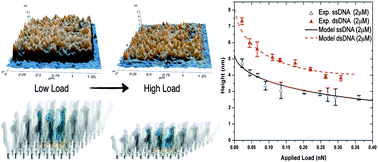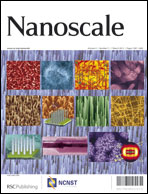Hybridization in nanostructured DNA monolayers probed by AFM: theory versus experiment†
Abstract
Nanografted monolayers (NAMs) of DNA show novel physico-chemical properties that make them ideally suited for advanced biosensing applications. In comparison with alternative solid-phase techniques for diagnostic DNA detection, NAMs have the advantage of combining a small size with a high homogeneity of the DNA surface coverage. These two properties favour the extreme miniaturization and ultrasensitivity in high-throughput biosensing devices. The systematic use of NAMs for quantitative DNA (and


 Please wait while we load your content...
Please wait while we load your content...